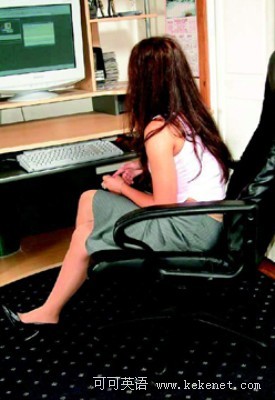
A healthy human spine has a natural S-shape, but sitting pushes the lower lumbar curve into more of a C-shape so that the back and abdominal muscles designed to support the body are unused.
Over time, the postural muscles become so weak that they are unable to support the spine effectively and back pain inevitably ensues.
健康人的脊柱呈自然的S形,但坐姿把腰部往后推成“C”形,使本該支持身體的背部和腹部肌肉失去了作用。長此以往,背部肌肉變弱變薄,它們無法有力的支持脊柱,疼痛不可避免地襲來。
'With your knees at a 90-degree angle when you sit, your hamstring muscles and hip flexors are permanently shortened and your buttock muscles stretched,' says Margo.
'This leads to muscles and joints tightening so much that your body moves less freely and is more prone to pain and injury.'
“坐著的時候,膝蓋呈90度彎曲,肌腱和髖部屈肌一直被壓縮,臀部肌肉被拉伸,”馬戈說,“這將導致肌肉和關節大幅收緊,長此以往,你的肢體動作變得不再自由和舒展,疼痛和受傷卻比原來更加頻繁。”
Breathing is also hampered, Margo says, as the body struggles to fill the lungs with oxygen when crunched in a seated position. Sitting also crunches the abdominal contents and digestion is slowed down as a result.
'All of this means energy levels can flag through lack of oxygen and sluggish digestion,' says Margo. 'Because your abdominal muscles are not being engaged when you sit, you will also lose tone in that area.
馬戈說,呼吸也受影響的原因是彎曲身體的坐姿給肺部輸送氧氣增加了困難。腹部也無法舒展,導致消化減緩。“所有這些都意味著在缺少氧氣和消化減緩的情況下,人的力量也會衰退,因為當腹肌處于松懈狀態,就無法提供力量。”
'It's not good news and my advice is to stretch or go for a short walk as often as you can.'
“這不是好消息,我的建議是盡可能經常做一下伸展或一小段步行。 ”













